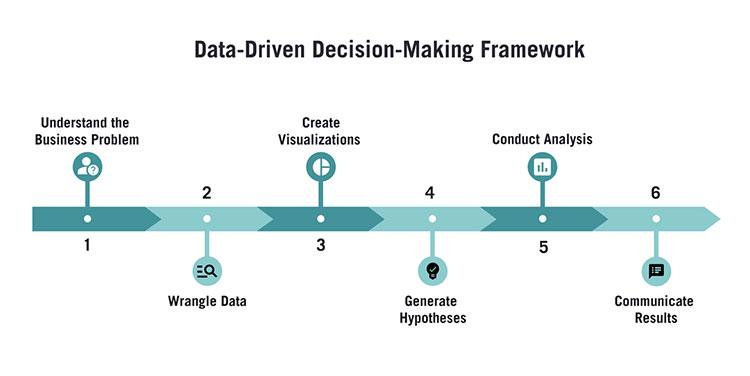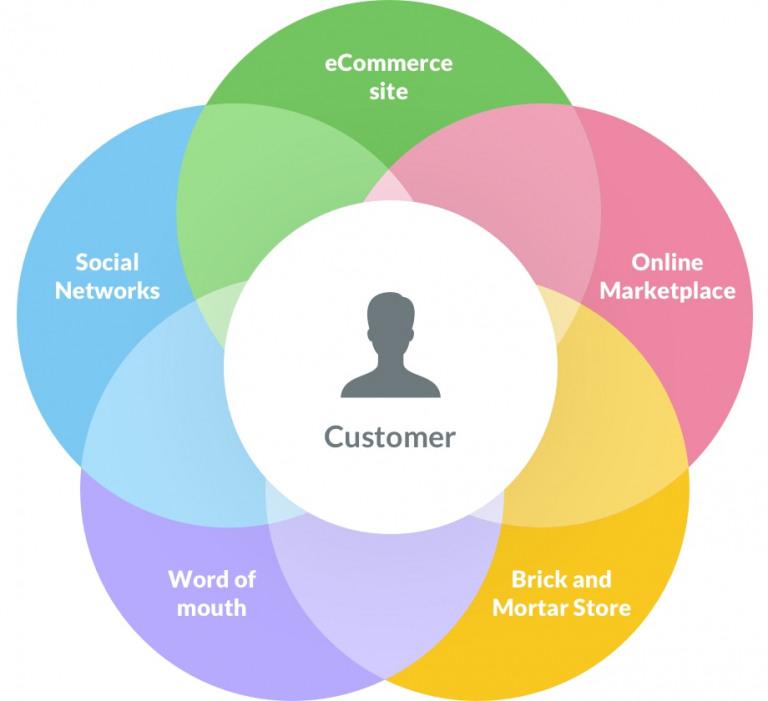Mastering Digital Marketing: Strategies for Online Success in 2024
Md. Joynal Abdin*
Business Consultant & Digital Marketer
Co-Founder & CEO of Bangladesh Trade Center
In the ever-evolving landscape of business and commerce, one thing remains constant: the crucial role of digital marketing in driving online success. As we navigate the dynamic year of 2023, mastering the intricacies of digital marketing has become more essential than ever before. The rapid advancements in technology, shifts in consumer behavior, and the ever-expanding online marketplace have ushered in a new era of challenges and opportunities for businesses striving to make their mark.
Gone are the days when traditional marketing strategies alone could guarantee a company’s growth and outreach. Today, the digital realm is where brands must establish their presence, engage their target audience, and convert leads into loyal customers. This journey, however, is far from straightforward. It demands a nuanced understanding of the digital landscape, a deep comprehension of consumer behavior, and an agile approach to staying ahead of the curve.
The purpose of this blog is to serve as your compass in this intricate digital ecosystem. We will delve into the strategies, trends, and best practices that can empower businesses to not only survive but thrive in 2023 and beyond. Whether you’re a seasoned marketing professional looking to refine your skills or an entrepreneur taking your first steps into the digital realm, this guide aims to provide insights that are both informative and actionable. You can adopt and implement following strategies for online success:
- The Digital Landscape: Navigating the Complex Terrain
As we step into 2023, the digital landscape has become more diverse and intricate than ever. From social media platforms to search engines, emails marketing to influencer collaborations, the avenues through which businesses can engage with their audience have multiplied. Understanding where to invest your resources and efforts is a fundamental aspect of digital marketing mastery.
Search engine algorithms continue to evolve, shaping the way content is discovered online. Content marketing, once a supportive tactic, now takes center stage in driving organic traffic and establishing a brand’s authority. Additionally, the rise of voice search and mobile optimization has transformed the way consumers interact with digital content, emphasizing the need for adaptability in your strategies.
- Data-Driven Decision Making: Harnessing Insights for Success
In the digital age, information is power, and the vast amount of data available can be harnessed to make informed decisions. Analyzing user behavior, engagement metrics, and conversion rates provides valuable insights into the effectiveness of your campaigns. This data-driven approach is pivotal in optimizing your strategies and ensuring you’re allocating resources where they yield the highest return on investment.
The use of artificial intelligence and machine learning further amplifies the potential of data analysis. These technologies enable predictive analytics, helping you anticipate market trends and consumer preferences, enabling you to tailor your marketing efforts accordingly. From personalized recommendations to chatbots that enhance customer support, AI is reshaping the way businesses interact with their audience.
- Content Resonance: Crafting Compelling Digital Narratives
In an era saturated with information, the battle for attention is fiercer than ever. Crafting compelling and resonant content is the cornerstone of successful digital marketing. Whether it’s a blog post, a social media update, or a video, your content must not only capture attention but also engage, educate, and inspire your audience.
Storytelling remains a powerful tool in creating emotional connections with your audience. Through narratives that resonate with your brand’s values and the aspirations of your audience, you can foster a sense of loyalty and community. Additionally, interactive content such as quizzes, polls, and user-generated campaigns enhance engagement and create memorable experiences.
- Omni-Channel Synergy: Orchestrating a Cohesive Brand Experience
The modern consumer is no longer confined to a single platform or device. They seamlessly transition between various touchpoints, expecting a consistent and cohesive brand experience. Mastering digital marketing in 2023 involves orchestrating an omni-channel strategy that seamlessly integrates your brand message across all platforms.
Social media, email, website, and physical touchpoints should all align with your brand’s identity, voice, and values. This not only enhances recognition but also fosters trust and loyalty. An omni-channel approach ensures that your audience receives a unified experience regardless of where they engage with your brand.
- Embracing Change: Agility in the Face of Evolution
The only constant in the digital realm is change. Strategies that yield success today might become obsolete tomorrow. This underscores the importance of agility and adaptability in your digital marketing approach. Staying informed about emerging trends, experimenting with new tools, and being willing to pivot when necessary is key to maintaining a competitive edge.
In short, the digital marketing landscape of 2023 is a dynamic and exciting arena. Mastering it requires a multi-faceted approach that encompasses understanding the digital terrain, harnessing the power of data, crafting resonant content, orchestrating an omni-channel strategy, and embracing change. This blog will be your guide on this journey, offering insights, strategies, and real-world examples to empower you to navigate the challenges and harness the opportunities that lie ahead. So, let’s embark on this expedition to master digital marketing and achieve online success in the vibrant year of 2023 and beyond.
- The Digital Landscape: Navigating the Complex Terrain
In the contemporary world, the digital landscape has undergone a monumental transformation, fundamentally altering the way individuals and businesses interact, communicate, and conduct commerce. As we find ourselves in the year 2023, a deeper exploration of the digital landscape becomes imperative to grasp the dynamics that shape online interactions, commerce, and communication. This section delves into the multifaceted dimensions of the digital landscape, shedding light on its various elements and their implications for digital marketing strategies.
1.1 Multiplicity of Platforms: The digital landscape is marked by an expansive assortment of platforms, each catering to specific types of interactions and content consumption. Social media networks have proliferated, each with its unique characteristics and audience demographics. From the image-focused allure of Instagram to the professional networking prowess of LinkedIn, these platforms present businesses with an array of avenues to connect with their target audience.
Search engines continue to play a pivotal role in the digital landscape. Search engine optimization (SEO) remains essential for ensuring that businesses’ online content is discoverable and accessible. The intricacies of search algorithms continue to evolve, influencing how content is ranked and displayed to users. Thus, understanding and adapting to these algorithmic shifts are integral to maintaining online visibility.
1.2 Content Reigns Supreme: In this digital era, content is unequivocally the king. Content marketing has become more than just a supplementary strategy; it is now the bedrock of online engagement and brand establishment. The production of high-quality, relevant, and valuable content serves multiple purposes: it informs, educates, entertains, and engages audiences. Blog posts, videos, infographics, podcasts, and interactive content have emerged as tools for building and sustaining meaningful connections with consumers.
User-generated content also deserves a notable mention in the digital landscape. Customers’ reviews, testimonials, and social media posts hold immense sway over the purchasing decisions of prospective buyers. This democratization of content creation empowers consumers and underscores the significance of providing exceptional products and services that naturally generate positive sentiments.
1.3 The Mobile Revolution: The ubiquity of smartphones has irrevocably shifted the digital landscape. Mobile devices are now the primary means through which users access online content. Consequently, mobile optimization has ceased to be optional; it’s a necessity. Websites and applications must be designed with mobile responsiveness in mind to ensure seamless navigation and an optimal user experience across various devices.
Moreover, the rise of mobile applications has introduced a new dimension to consumer engagement. Brands that leverage well-designed and user-friendly apps can foster deeper connections with their customers, delivering tailored experiences and providing immediate access to their products and services.
1.4 Video Dominance: The dominance of video content stands as a defining feature of the digital landscape. The popularity of platforms like YouTube and the integration of video features on social media networks underscore the power of visual storytelling. Videos have the ability to convey complex ideas, evoke emotions, and establish a genuine connection with the audience.
Live streaming, in particular, has gained traction as a means of real-time engagement. Brands can use live videos to host Q&A sessions, product launches, behind-the-scenes glimpses, and interactive events. This form of content not only offers immediacy but also generates a sense of authenticity and unfiltered connection.
1.5 The E-Commerce Ecosystem: The e-commerce landscape has evolved into a bustling marketplace, replete with opportunities and challenges. Online shopping has become a norm, accelerated further by global events that have driven the adoption of digital transactions. This shift necessitates a strategic focus on creating a seamless online shopping experience, from intuitive website navigation to secure payment gateways.
Personalization and recommendation engines are at the forefront of enhancing the e-commerce experience. By analyzing user behavior and purchase history, brands can tailor product recommendations, increasing the likelihood of conversions and fostering customer loyalty.
The digital landscape of 2023 is a dynamic tapestry interwoven with numerous threads, each representing a facet of online interactions and engagement. From the proliferation of platforms to the significance of content, mobile dominance, video’s ascendancy, and the thriving e-commerce ecosystem, every aspect contributes to the complexity and vibrancy of this landscape.
In the realm of digital marketing, understanding and harnessing the various elements of this landscape are vital for devising effective strategies. Adapting to evolving algorithms, producing engaging content, optimizing for mobile devices, incorporating video, and navigating the intricacies of e-commerce are all integral to achieving online success.
As the digital landscape continues to evolve, businesses must remain agile, observant, and innovative. By embracing the ever-changing dynamics of this landscape, marketers can position themselves to not only survive but thrive in the intricate and exciting digital terrain of 2023 and beyond.
- Data-Driven Decision Making: Harnessing Insights for Optimal Outcomes
In the vast and intricate landscape of the digital age, information has become a currency of paramount importance. The ability to collect, analyze, and extract insights from data has revolutionized how businesses operate, make strategic decisions, and achieve their objectives. In the year 2023, data-driven decision-making stands as a cornerstone of success, enabling organizations to navigate complexity and uncertainty with precision and agility. This section delves into the intricacies of data-driven decision making, highlighting its significance, methodologies, and the transformative impact it has on businesses across industries.
2.1 The Power of Data: Data is not merely a collection of numbers and statistics; it is a treasure trove of insights that reveal patterns, trends, and correlations that would otherwise remain hidden. The proliferation of digital interactions has generated an unprecedented volume of data, encompassing customer behavior, engagement metrics, purchasing patterns, and much more. This data serves as a roadmap to understanding consumer preferences, market dynamics, and the effectiveness of various business strategies.
The utilization of data is not confined to reactive decision making; it extends to proactive planning and strategy formulation. Organizations that harness the power of data can predict market trends, anticipate shifts in consumer preferences, and optimize their operations to align with emerging opportunities.
2.2 Data Collection and Analysis: The journey of data-driven decision making commences with the systematic collection and aggregation of relevant data points. This data can originate from various sources, including website analytics, social media interactions, customer surveys, and sales records. The advent of advanced tools and technologies facilitates real-time data capture, enabling organizations to monitor and respond to changes promptly.
Once data is collected, the analysis phase takes center stage. Data analysis involves sorting, organizing, and interpreting data to extract meaningful insights. This process often employs statistical techniques, machine learning algorithms, and data visualization tools to transform raw data into actionable intelligence. From identifying customer segments to uncovering correlations between variables, data analysis forms the bedrock of informed decision making.
2.3 Personalization and Customer Insights: Data-driven decision making allows businesses to personalize their interactions with customers, tailoring their offerings and communication to individual preferences. By analyzing historical purchasing behavior and engagement patterns, organizations can recommend products, services, and content that resonate with each customer. Personalization not only enhances customer satisfaction but also boosts the likelihood of conversion and brand loyalty.
Customer insights derived from data also aid in refining products and services. By understanding customer pain points, preferences, and feedback, businesses can iterate and innovate, ensuring that their offerings remain relevant and competitive in a rapidly evolving marketplace.
2.4 Performance Evaluation and Optimization: Data-driven decision making is synonymous with continuous improvement. Organizations can assess the performance of various initiatives and strategies by analyzing relevant metrics. From website traffic and conversion rates to email open rates and social media engagement, each metric provides valuable insights into the effectiveness of specific actions.
This approach enables businesses to optimize their strategies in real-time. If a marketing campaign is underperforming, for instance, data can reveal the specific pain points, allowing marketers to make necessary adjustments promptly. This agility ensures that resources are allocated to activities that yield the highest returns, enhancing overall efficiency and effectiveness.
2.5 Predictive Analytics and Future Insights: One of the most remarkable aspects of data-driven decision making is its capacity for predictive analytics. By analyzing historical data and identifying patterns, businesses can make informed predictions about future trends and outcomes. For example, retailers can anticipate peak shopping seasons, enabling them to stock up on popular products and adjust their marketing efforts accordingly.
Furthermore, predictive analytics aids in risk assessment and strategic planning. Businesses can identify potential challenges and opportunities on the horizon, enabling them to formulate proactive strategies that mitigate risks and capitalize on emerging trends.
2.6 Ethical Considerations and Data Privacy: While data-driven decision making offers incredible benefits, it also raises important ethical considerations, particularly concerning data privacy and security. As businesses collect and analyze customer data, they must prioritize transparency, consent, and safeguarding sensitive information. Striking a balance between deriving insights from data and respecting individuals’ privacy rights is essential to maintaining trust and legitimacy.
In the digital landscape of 2023, data-driven decision making isn’t a mere option; it’s a strategic imperative. The ability to harness the power of data enables businesses to make informed choices, optimize operations, personalize experiences, and predict future trends. As organizations navigate an increasingly complex and fast-paced environment, data-driven insights serve as beacons, guiding them toward optimal outcomes and sustainable success.
By collecting, analyzing, and acting upon data, businesses can anticipate shifts in consumer behavior, adapt to market dynamics, and innovate with precision. As technology continues to evolve, the role of data in decision making will only become more prominent, reshaping industries and propelling organizations toward new heights of competitiveness and innovation. In an era where data reigns supreme, those who master the art of data-driven decision-making stand poised to excel in the dynamic landscape of 2023 and beyond.
- Content Resonance: Crafting Meaningful Connections in the Digital Age
In the expansive realm of the digital landscape, where information flows ceaselessly and attention spans are fleeting, the concept of content resonance emerges as a beacon of strategic significance. Content resonance transcends the mere creation of text, images, and videos—it encompasses the art of crafting messages that not only capture attention but also resonate deeply with audiences, fostering meaningful connections and driving engagement. In the year 2023, as content inundates every digital platform, understanding and harnessing the power of content resonance is paramount for individuals and businesses alike. This section delves into the intricacies of content resonance, exploring its core elements, strategies, and the profound impact it has on digital marketing and communication.
3.1 The Essence of Content Resonance: Content resonance extends beyond superficial engagement metrics; it delves into the realm of emotions, values, and relevance. When content resonates with an audience, it evokes emotions, taps into shared experiences, and aligns with their aspirations and beliefs. This resonance generates a sense of connection, prompting audiences to not only consume content but also to share, comment, and engage with it on a deeper level.
At the heart of content resonance lies authenticity. Authentic content speaks to the genuine nature of a brand or individual, fostering a sense of trust and credibility. In an era where consumers seek authenticity and transparency, resonant content becomes a powerful tool for establishing and nurturing relationships.
3.2 Understanding the Audience: Creating resonant content begins with a deep understanding of the target audience. Businesses and content creators must invest time in researching their audience’s demographics, psychographics, pain points, aspirations, and preferred communication styles. This knowledge forms the foundation upon which resonant content is built.
Empathy plays a pivotal role in this process. By putting themselves in the shoes of their audience, content creators can better anticipate their needs and desires, tailoring content that speaks directly to their concerns and interests. Empathetic content is relatable, demonstrating that the creator understands and cares about their audience’s experiences.
3.3 Storytelling as a Resonance Tool: Storytelling is an age-old practice that continues to hold immense power in the digital age. Stories have the capacity to captivate, inspire, and create emotional connections. Through narratives, brands and individuals can convey their values, share relatable experiences, and highlight their unique journeys.
Effective storytelling for content resonance involves identifying common human experiences that align with a brand’s mission or message. Whether it’s a personal anecdote, a customer success story, or a brand’s origin narrative, storytelling can imbue content with authenticity and emotional resonance, leaving a lasting impact on the audience.
3.4 Relevance and Value: Resonant content is not only emotionally engaging but also inherently valuable to the audience. It addresses their needs, answers their questions, and provides solutions to their problems. Content creators should focus on delivering actionable insights, practical tips, and thought-provoking perspectives that enrich the audience’s knowledge or experience.
Moreover, timeliness and relevance are key factors in content resonance. Crafting content that aligns with current events, trends, or seasonal interests demonstrates a keen awareness of the audience’s context and positions the content as a valuable resource in the moment.
3.5 Interactive and User-Generated Content: Content resonance is often amplified when audiences are actively involved. Interactive content, such as quizzes, polls, surveys, and contests, not only engages audiences but also provides a platform for them to participate and share their opinions. This interactivity fosters a sense of ownership and belonging, enhancing the resonance of the content.
User-generated content is another avenue for deepening content resonance. When customers or followers contribute their own content—reviews, testimonials, photos, etc.—they become part of the brand narrative. This not only builds trust but also strengthens the emotional connection between the audience and the brand.
3.6 Measuring and Adapting: Resonance isn’t always quantifiable through traditional metrics alone. While engagement metrics like likes, shares, and comments offer insights, the true impact of content resonance goes beyond numerical values. Instead, it’s measured in the sentiment it generates, the conversations it sparks, and the lasting impression it leaves.
Monitoring audience feedback, sentiment analysis, and qualitative interactions can provide a more holistic understanding of content resonance. And based on this feedback, content creators can refine their strategies and adapt their messaging to better align with audience preferences and values.
In the dynamic digital landscape of 2023, content resonance stands as a foundational principle that differentiates between mere content creation and strategic engagement. Crafted with empathy, authenticity, and a profound understanding of the audience, resonant content transcends the ephemeral noise of the digital realm, forging genuine connections and eliciting emotional responses.
By recognizing the power of storytelling, delivering relevance and value, encouraging interactivity, and fostering user-generated content, content creators and businesses can create a symphony of resonance that resonates deeply with their audience. As we navigate the ever-evolving digital landscape, mastering the art of content resonance is not only a means to capture attention but a pathway to cultivating lasting relationships, driving engagement, and leaving an indelible mark on the hearts and minds of those who engage with the content.
- Omni-Channel Synergy: Creating a Unified Brand Experience in the Digital Era
In the interconnected world of the digital age, where consumers traverse a multitude of platforms and devices, the concept of omni-channel synergy has emerged as a strategic imperative for businesses aiming to create a cohesive and impactful brand presence. In the year 2023, as digital interactions continue to shape consumer behavior, mastering omni-channel synergy is not just a choice; it’s a necessity for businesses seeking to establish and maintain meaningful connections with their audience. This section delves into the nuances of omni-channel synergy, exploring its significance, strategies, and the transformative impact it has on shaping seamless and memorable brand experiences.
4.1 Defining Omni-Channel Synergy: Omni-channel synergy goes beyond mere multi-channel presence. While multi-channel refers to having a presence on various platforms, omni-channel synergy involves seamlessly integrating these platforms to provide customers with a consistent and unified brand experience. Whether a customer interacts with a brand through a physical store, a website, social media, a mobile app, or any other touchpoint, the experience should be cohesive, synchronized, and tailored to their preferences.
The goal of omni-channel synergy is to ensure that customers perceive and interact with a brand as a single entity, regardless of the platform or device they choose. This not only enhances brand recognition but also fosters trust, loyalty, and a sense of connection.
4.2 Mapping the Customer Journey: Central to achieving omni-channel synergy is a comprehensive understanding of the customer journey. Businesses must map out the various touchpoints and interactions that customers have with their brand—from initial discovery to purchase and post-purchase support. By identifying these touchpoints, businesses can strategically design an integrated experience that seamlessly transitions customers from one platform to another.
A holistic view of the customer journey also allows businesses to identify potential pain points or gaps in the experience. These insights can then be used to streamline processes, optimize interactions, and enhance the overall customer experience.
4.3 Consistency in Brand Messaging: A key element of omni-channel synergy is maintaining consistency in brand messaging across all platforms. The brand’s voice, tone, values, and visual identity should remain uniform, ensuring that customers recognize the brand regardless of where they encounter it. Inconsistencies in messaging can lead to confusion and dilution of brand identity.
Additionally, businesses should adapt their messaging to suit the nuances of each platform while maintaining the core brand essence. For example, while the messaging on a social media platform might be more informal, the messaging on an official website could be more professional. The key is to strike a balance between adaptation and maintaining the core brand identity.
4.4 Seamlessness in Transition: One of the challenges in achieving omni-channel synergy is ensuring a seamless transition for customers as they move between platforms. Customers should be able to start an interaction on one platform and seamlessly continue it on another without losing context. For instance, if a customer adds items to their cart on a mobile app, those items should still be in the cart when they log in to their account on the website.
Technological solutions such as single sign-on (SSO), cross-platform data synchronization, and real-time updates are crucial in ensuring a frictionless transition for customers. Businesses must invest in robust technology infrastructure to enable this level of seamless integration.
4.5 Personalization and Contextualization: Omni-channel synergy thrives when it is accompanied by personalization and contextualization. Businesses should leverage data insights to tailor the customer experience based on individual preferences, purchase history, and behavior. This personal touch not only enhances customer satisfaction but also deepens the emotional connection with the brand.
For instance, sending personalized recommendations, targeted offers, and relevant content based on the customer’s preferences can significantly enhance the omni-channel experience. Contextualization involves delivering the right content at the right time in the customer journey, ensuring that interactions are relevant and valuable.
4.6 Feedback and Continuous Improvement: The pursuit of omni-channel synergy is an ongoing endeavor. Businesses should actively seek feedback from customers regarding their experiences across various platforms. This feedback can provide invaluable insights into areas that require improvement, identify new opportunities, and ensure that the omni-channel strategy remains aligned with evolving customer expectations.
Continuous improvement involves analyzing data, monitoring engagement metrics, and iterating on strategies to enhance the omni-channel experience. A culture of adaptability and responsiveness is key to maintaining a successful omni-channel synergy strategy.
In the dynamic digital landscape of 2023, omni-channel synergy stands as a testament to a brand’s commitment to delivering exceptional customer experiences. By seamlessly integrating platforms, maintaining consistency in messaging, ensuring smooth transitions, personalizing interactions, and embracing continuous improvement, businesses can create a unified brand presence that resonates deeply with customers.
Omni-channel synergy isn’t just about technology; it’s about strategy, empathy, and the art of understanding and meeting customers’ needs across various contexts. As consumers seamlessly move between platforms and devices, those businesses that master the art of omni-channel synergy are poised to thrive in an environment where memorable brand experiences and cohesive interactions are the hallmarks of success.
- Embracing Change: Navigating Evolution in the Digital Landscape
In the rapidly evolving landscape of the digital era, the concept of embracing change has emerged as a fundamental prerequisite for success. The year 2023 brings with it a relentless stream of technological innovations, shifts in consumer behavior, and dynamic market dynamics. In this environment, individuals and businesses that are agile, adaptable, and open to change stand poised to not only survive but thrive. This section delves into the multifaceted dimensions of embracing change, exploring its significance, strategies, and the profound impact it has on navigating transformation in the digital landscape.
5.1 The Imperative of Adaptability: Change is an inherent aspect of the digital landscape. The rapid pace of technological advancement, emerging market trends, and evolving consumer preferences all contribute to an environment that is in constant flux. Embracing change is not merely a choice; it’s an imperative for individuals and businesses seeking to remain relevant and competitive.
The ability to adapt is what differentiates between those who flourish and those who falter. Whether it’s staying ahead of algorithm updates, incorporating new communication tools, or pivoting in response to unforeseen events, adaptability is the compass that guides businesses through uncertainty.
5.2 Continuous Learning and Skill Development: Embracing change requires a commitment to continuous learning and skill development. In the digital landscape, where the shelf life of knowledge is shrinking, individuals and businesses must invest in staying updated with the latest trends, tools, and best practices. This involves regularly seeking out educational resources, attending workshops, and engaging in online courses.
The willingness to learn extends beyond technical skills; it also encompasses an openness to acquiring new perspectives and insights. Industries are evolving, and those who are willing to embrace diverse viewpoints are better positioned to anticipate shifts and make informed decisions.
5.3 Agile Strategy Formulation: Static business plans and rigid strategies are ill-suited for the digital landscape. Embracing change entails an agile approach to strategy formulation. Businesses must be prepared to adjust their plans based on new data, emerging trends, and customer feedback. An agile strategy allows for quick iterations and course corrections, ensuring that actions remain aligned with objectives.
This flexibility enables businesses to capitalize on emerging opportunities and pivot away from initiatives that are no longer effective. The ability to pivot swiftly can be the difference between being left behind and leading the way.
5.4 Innovating with Purpose: Embracing change is not merely about following the latest trends; it’s about innovative thinking with purpose. Innovation should be driven by a deep understanding of customer needs and a commitment to providing value. Businesses should actively seek out opportunities to improve processes, enhance products or services, and create new avenues for engagement.
Strategic innovation involves balancing experimentation with calculated risk-taking. It requires a willingness to step out of comfort zones and explore new territories, all while keeping the end user’s experience at the forefront.
5.5 Data-Driven Decision Making: Change often brings uncertainty, and data-driven decision making becomes a guiding light in such situations. Data provides insights that can illuminate the path forward, helping businesses understand shifts in consumer behavior, market trends, and the effectiveness of various strategies. By analyzing data, businesses can make informed decisions that are grounded in evidence rather than assumptions.
Data-driven decision making also involves the willingness to acknowledge when something isn’t working and having the courage to pivot. This requires humility and a commitment to growth over ego.
5.6 Cultural Shifts and Change Leadership: Embracing change is not solely a matter of adopting new tools or strategies; it’s also about cultivating a cultural shift within an organization. Change leadership involves fostering an environment where experimentation is encouraged, failure is seen as a learning opportunity, and adaptability is celebrated.
Leaders play a pivotal role in setting the tone for change. They must lead by example, demonstrating a willingness to evolve, learn, and embrace new approaches. By creating a culture of continuous improvement and openness to change, organizations can navigate transformation more effectively.
In the dynamic digital landscape of 2023, embracing change is a non-negotiable attribute for individuals and businesses alike. The ability to adapt, learn, innovate, and make data-driven decisions is what separates those who thrive from those who struggle. As technology continues to redefine industries and consumer expectations evolve, the capacity to embrace change becomes the cornerstone of sustained success.
In the face of uncertainty and complexity, those who view change as an opportunity rather than a challenge are better equipped to navigate the digital landscape with resilience and purpose. By embracing change, individuals and businesses can position themselves to harness the transformative potential of the digital era and emerge as leaders in a world defined by perpetual evolution.
Closing remarks:
As we conclude our exploration of “Mastering Digital Marketing: Strategies for Online Success in 2023,” we find ourselves at the intersection of innovation, strategy, and opportunity. The dynamic landscape of the digital era demands an unwavering commitment to understanding, adapting, and thriving in an ever-evolving ecosystem.
In this journey, we’ve delved into the intricacies of digital marketing, unraveling the significance of content resonance, data-driven decision making, omni-channel synergy, embracing change, and much more. We’ve discovered that success in the digital realm isn’t just about tactics; it’s about creating meaningful connections, harnessing insights, crafting cohesive experiences, and navigating transformation with agility.
As you embark on your digital marketing endeavors, remember that each strategy discussed here is a piece of a comprehensive puzzle. Success doesn’t hinge on a single element but on the harmonious integration of these strategies into a unified approach that resonates with your audience, reflects your values, and adapts to the ever-changing landscape.
In the vibrant year of 2023 and beyond, the opportunities within the digital landscape are boundless. By mastering the art of digital marketing, you’re equipping yourself with the tools to not only survive but to thrive. Whether you’re a seasoned marketer refining your skills or a newcomer stepping onto the digital stage, the insights shared here serve as a compass, guiding you toward online success.
The digital realm awaits your creative endeavors, your strategic insights, and your willingness to embrace change. The possibilities are limitless, and as you navigate this digital journey, remember that continuous learning, adaptability, and a deep understanding of your audience will be your North Star.
Thank you for embarking on this exploration with us. May your digital marketing efforts in 2023 be marked by resonance, innovation, synergy, adaptability, and, above all, remarkable success.
Mastering Digital Marketing: Strategies for Online Success in 2023: Mastering Digital Marketing: Strategies for Online Success in 2023
*Author’s Short Profile:
Mr. Md. Joynal Abdin is a Business Consultant & Digital Marketer based in Dhaka, Bangladesh. He is also Co-Founder & CEO of Bangladesh Trade Center. Previously he served at Dhaka Chamber of Commerce & Industry (DCCI) as Executive Secretary; DCCI Business Institute (DBI) as Executive Director; SME Foundation as Deputy Manager; and the Federation of Bangladesh Chambers of Commerce & Industry (FBCCI) as Assistant Secretary.
The list of services Mr. Abdin is offering includes but not limited to Business Research and Documentations like Feasibility Study, Project Proposal Preparation, Writing Business Manual, Standard Operating Procedures etc.; Export Market Selection and Product Positioning at Home and Abroad; Buyers-Sellers Matchmaking; Website Development; Search Engine Optimization (SEO); and Social Media Marketing etc.









 by
by